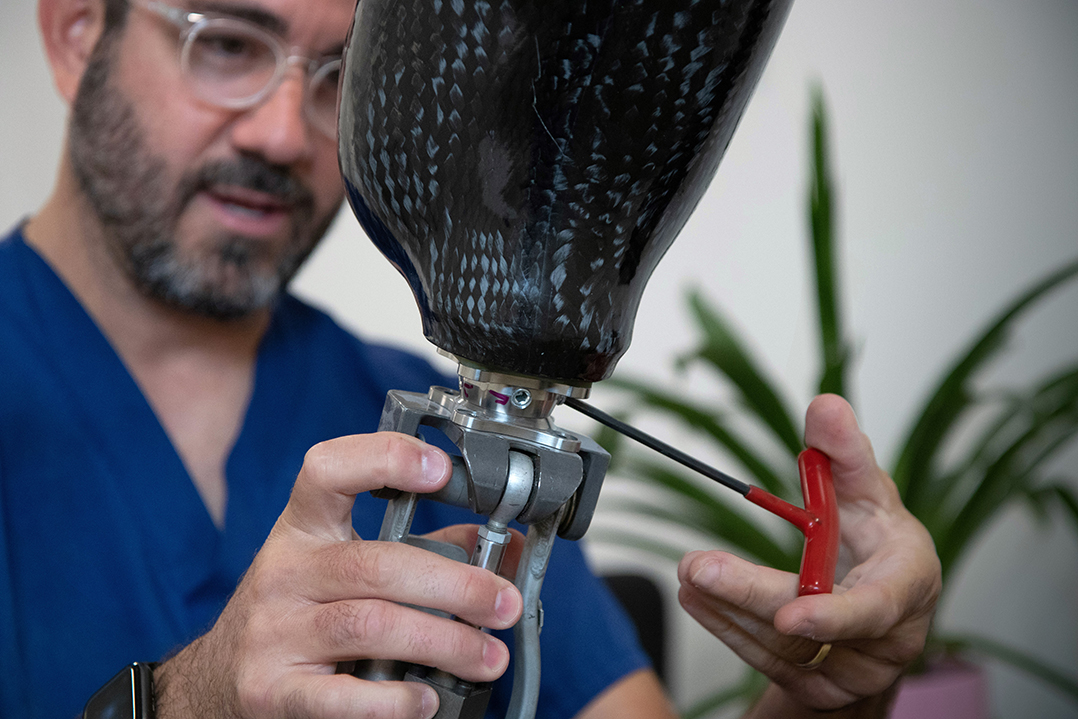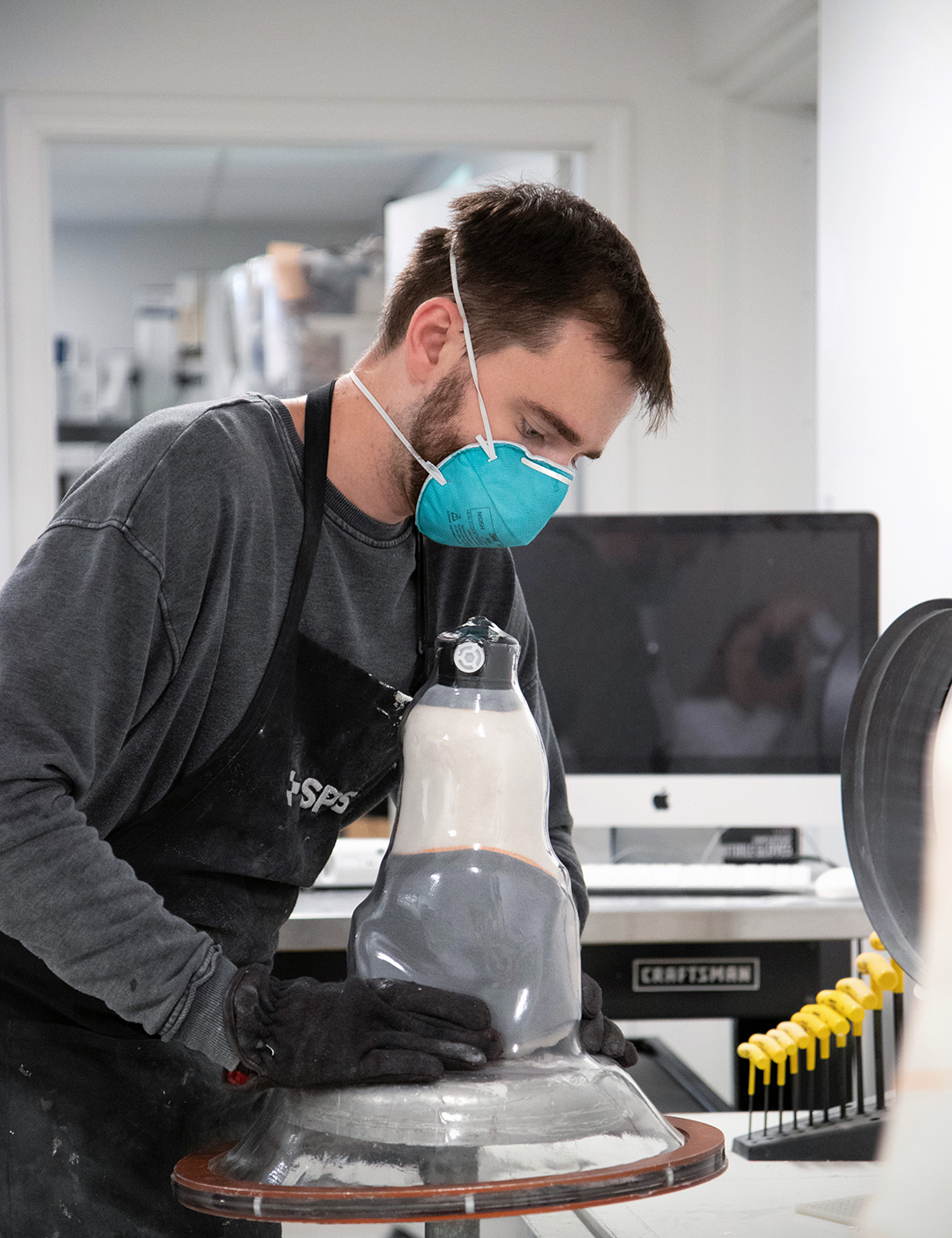In 2020, Zionsville resident Matthew Habecker bought a new space for his prosthesis clinic, the Indiana Institute of Prosthetics, which he said he designed to dually function as a medical space and an art gallery.
Unfortunately for Habecker, the COVID-19 pandemic put a hold on his plans for a grand opening of the clinic in the Legacy Core district of Whitestown. Indiana Institute of Prosthetics would remain in its former location in Zionsville until early 2021, when renovations were completed on the Whitestown property.
Habecker said the idea for the clinic/art gallery concept came to him when he was at his previous clinic in Zionsville. There, he would display photos from his sister’s nonprofit, The Viewfinder Project, an organization that provides children with cameras so they could take pictures of things they found beautiful.
“The pictures that would come back from (the Viewfinder Project) would oftentimes be of something that we would otherwise see as being mundane or uninteresting, but through the eyes of a kid, you know, the kids saw beauty in that,” he said.
Habecker said the concept resonated with him because it reflected his goal as a prosthetist to help others find beauty even in the toughest of circumstances.
Because of the substantial interest in the photos and his own fascination with artistic expression, Habecker said he became fascinated with the idea of displaying artwork in his clinic as a source of dialogue with his patients.
“The overlap of ideas and that fascination and love for the art that we enjoyed in our Zionsville clinic kind of grew and expanded,” he said. “I knew that that was going to be an important part of what we wanted to do here.”
Habecker said he’s always had a passion for art, which led him to begin his college career studying graphic design. But he said he soon found that he didn’t like the idea of being told what to draw for the rest of his life as opposed to creating art from scratch.
As a result, Habecker switched to a pre-med track, but decided the life of an on-call physician wasn’t for him. He ultimately earned a business degree but didn’t want to work in a cubicle.
Habecker took the summer off after college to visit his parents in Manhattan. He said that as he was walking down Broadway with his dad, he saw a man “walking beautifully” with a prosthetic leg, and decided creating prosthetics was what he wanted to do as a career.
Habecker said he wanted to bridge boundaries between different subjects by bringing art into his clinic, much like how he had combined his love for art, business and medicine to become a prosthetist.
“I think socially, we are very limited by the chalk lines that we draw. We say, ‘This chalk line can’t overlap another chalk line,” he said. “You know, ‘Your art gallery has to be in a certain chalk line, and it can’t mix with anything else, because it’s an art gallery.’”
Habecker said he was intentional about the design of the building during the remodel. He said he was inspired by the McLaren Technology Center in England to create what he called a ‘yin-yang’ layout with an open clinical space in the front and a separate technical space in back.
When it came to optimizing the space to display art, Habecker said photographs of the Harrison Center in Indianapolis inspired the design and placement of the track lighting, doors and windows. However, he said he didn’t want to remove every trace of the building’s past, so he kept the block windows that were installed when the building was a restaurant.
“Anytime I see those block windows, it’s a reminder to me the importance of celebrating what something was and what it’s been through, in addition to celebrating what it’s becoming,” he said.
Joanna Taft of the Harrison Center in Indianapolis partnered with Habecker to find an artist well-suited to the gallery space. After visiting the clinic, she said the walls screamed Quincy Owens, a contemporary artist partnered with the Harrison Center.
“Quincy is really innovative, and when I saw the innovation happening there, I just felt like for a lot of reasons it would be a good fit,” Taft said. “It’s really fun to connect an innovator with an innovator, even though they’re innovating from different perspectives.”
Habecker said he hopes the art gallery will facilitate open-mindedness within the community, while also allowing him to build stronger connections with his patients.
“They’re here because of their prosthesis, it’s a very practical thing,” he said. “But the thing that they’ve gone through is a very personal, spiritual, emotional journey. And (art) just allows us to start a number of different dialogues that contribute to healing.’
The public is invited to attend the Indiana Institute of Prosthetics 10th-year anniversary and grand-opening celebration from 6-9 p.m. Oct. 14 at 4 N. Main St. in Whitestown.






